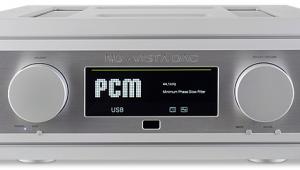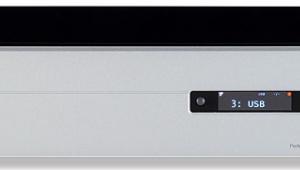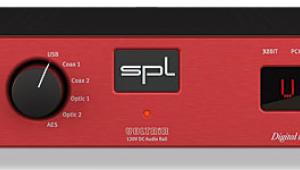dCS Bartók Network DAC/Headphone Amp

 With the option of a high-quality headphone stage, the new entry-level dCS network DAC marks a walk on the wild side for the Huntingdon company. Can it succeed?
With the option of a high-quality headphone stage, the new entry-level dCS network DAC marks a walk on the wild side for the Huntingdon company. Can it succeed?
By way of celebrating its 30th anniversary, dCS launched the limited edition Vivaldi One streaming DAC/SACD player [HFN Feb '18]. It was a present to itself, and some of the company's most well-heeled customers. Now, however, dCS's gaze has turned from past to future as it debuts its new £11,999 Bartók streaming DAC/headphone amplifier. The non-headphone version represents a saving of £2000.
Offering a headphone output in a source product is a clear step off the beaten track for this Huntingdon company. Indeed, this is the first dCS product to include an amplifier of any kind…
Small Wonder
Even though the Bartók is dCS's latest entry-level network DAC, and even omitting the headphone stage, it remains hugely sophisticated compared to its Debussy predecessor [HFN Dec '10]. It is app-controlled and also operable via a high-quality display, as are its pricier Rossini and Vivaldi big brothers. What's more, the new rotary volume control is far more useful than its forebear's fiddly 'up' and 'down' level buttons. In effect, it has become a fully functional DAC front-end – a Rossini that has shrunk in the wash, so to speak.
The company's Managing Director, David Steven, says the Bartók took two years to develop, despite the fact that much of DCS's existing technology was repurposed. It sports the latest Rossini-generation network card, power supply (one less regulated supply here), and processing board with the Ring DAC derived from the Vivaldi One. 'We threw everything we had at it, plus the option of a best-in-class headphone stage too', Steven says.
Because the digital conversion 'engine' is pretty much the same as that used in its more expensive models, the design team focused their efforts on developing the headphone module. 'That's why we first made a standalone headphone amplifier so we could voice it,' says Steven, 'and then worked with a number of leading headphone manufacturers and engineers who we know use headphones daily.'
'We learned a lot from them,' he continues, 'so we could do it right. We didn't want this to be seen as an afterthought. Indeed, we're thinking it could be the start of a new journey for us.'
More than just a hi-fi source component, the Bartók is a way of delivering music that would have been unrecognisable to those music lovers who bought the Debussy predecessor just a decade ago. Used via the dCS app it offers instant access to streaming services such as Tidal and Spotify, and plays back a wide range of file formats, including MQA.
It also streams over Ethernet from a NAS drive, and offers an array of industry-standard digital inputs including asynchronous USB, AES/EBU and S/PDIF. The network streaming section currently runs at up to 384kHz/24-bit and DSD128, supporting all major lossless codecs, and DSD in both native and DoP guises.

User Experience
Visually, the Bartók is more straightforward than the dramatic Rossini and Vivaldi with their sculpted fascias. These expensive castings are replaced here by slabs of aluminium, so while the flat fascia is certainly no less substantial, you won't feel so much like a film star or captain of industry with it sitting in your equipment rack. In other ways, it's very much the same as its bigger brothers with that crisp OLED display and rotary volume control helping to define the dCS 'user experience'.
A wide range of configuration options is accessible by pressing the menu button. Here it's possible to change the maximum analogue output level (0.2V to 6V), absolute phase, select the filter profiles for PCM and DSD, and switch on crossfeed when in headphone mode. This menu also governs any firmware updates, which is a classic dCS feature. We shouldn't forget that, despite being a decade-old, the Debussy was still receiving new functionality fairly recently – making it far less likely to become obsolete.
The easiest way to set up this unit is via the bespoke dCS Bartók app for iOS devices, which is downloadable for free from Apple's App Store. When launched, the app senses if the DAC is present on your home network and, if so, configures everything automatically. You then get full control of the unit, and the ability to change its numerous settings with a swipe of your finger on your iDevice screen.
Without the app the Bartók is not especially easy to configure because its display icons need some thinking about if you're a newcomer to the brand. Still, these soon become familiar, and there are other aspects to the way the unit works that are hugely satisfying. For example, the fine-pitch display is clear and informative – with sample rate, digital word length, PCM/DSD, etc, it tells you everything you need to know. Meanwhile, the metal control buttons feel reassuringly robust, and the volume control is silky in action.


















































